Wonderful Uses of Nail Grass
Impatiens - Overview
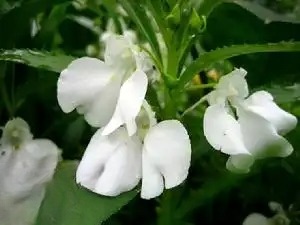 Impatiens
ImpatiensThe first appearance of tonggucao was in Jiuhuang Bencao. According to the picture, it is the plant of Leonurus japonicus in the Lamiaceae family, not this product. Tonggucao is recorded in the "Named but Unused" of "Compendium of Materia Medica", but its morphology is unknown. The tonggucao in "Bencao Yuanshi" refers to the Euphorbia euphorbia. "Gangmu Shiyi" quoted "Lingmi Danyao Jian" as saying: "Fengxianhua is also called tonggucao." It refers to Impatiens of the Impatiens family; the iron wire tonggucao quoted in "Medical Guide" is the tonggucao of the Clematis genus in the Ranunculaceae family, which shows that the ancient medicinal tonggucao was not a single species.
The medicinal materials of tonggucao are relatively complex. In addition to the widely used "Impatiens tonggucao", there is also "Zhenzhu tonggucao"; there is "Yangjiao tonggucao": the whole herb of Artemisia hornulae in the Bignoniaceae family. It is produced in Liaoning, Jilin, Heilongjiang, Shandong and other places, see "Artemisia hornense"; there is "Clematis truncatula" (Medical Guide), which is the dried whole herb of the yellow-flowered Clematis truncatula, a species of buttercup, produced in Hebei and Beijing. See "Clematis truncatula"; in the Northeast region, the whole herb of the legume plants mountain pea, wide pea, and false fragrant pea is used as truncatula. See "mountain pea"; in Yunnan and Guizhou, the branches and leaves of the Ericaceae plant Yunnan white pearl tree are used as truncatula. See "truncatula".
The stem of Impatiens balsamina is 40-100 cm high, fleshy, sturdy, and upright. Its flower is shaped like a butterfly, and the color of the flower is pink, scarlet, purple, white and yellow, sprinkled with gold, etc., and it is good at variation. Some varieties can bloom flowers of several colors on the same plant. Impatiens balsamina mostly has single petals, and double petals are called impatiens balls. According to ancient flower catalogs, there are more than 200 varieties of Impatiens, many of which have been lost. Because Impatiens is good at variation, some good varieties have been produced through artificial cultivation and selection, such as the five-color Impatiens, which grows at the top of the stem, has large and colorful flowers, and the ten-color Impatiens. According to the different flower shapes, it can be divided into rose type, camellia type, carnation type, etc. The flowering period of Impatiens is from June to August, and it produces capsules that are peach-shaped. When mature, the shell bursts automatically, ejecting the seeds, and self-sowing reproduction, so seeds must be collected in time.
Impatiens seeds are also called impatiens, and the stems are also called bone-penetrating grass. Both can be used as medicine, with the effects of promoting blood circulation and removing blood stasis, diuresis and detoxification, and dredge the menstruation and bone-penetrating. A separate entry "impatiens" is set up for discussion.
Impatiens Balsamina - Drug Description
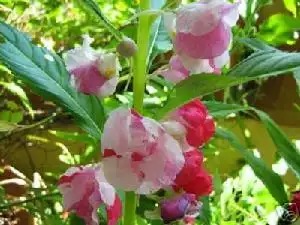 Impatiens
ImpatiensDrug name: Tougucao
Chinese Pinyin: TOUGUCAO
English name: Garden Balsam, Rose Balsam
Latin plant, animal and mineral name: Impatiens balsamina
Other names: Impatiens balsamina, Golden Phoenix Flower, Sajinhua, Jijicao (different from "Jijicao"), Xiaotaohong (because the double-petaled flowers are very similar to the peach blossoms), and nail grass.
Domain: Eukarya Kingdom
: Plantae
Phylum: Magnoliophyta
Class: Dicotyledonous Plants Magnoliopsida
Order: Ericales
Family: Balsaminaceae
Genus: Impatiens Impatiens
Species: Narcissus Impatiens balsamina
Nature and taste Function:
1. Seed (impatient): sweet, warm. Slightly toxic. Activate blood circulation and menstruation, dispel wind and relieve pain, and detoxify when used externally.
2. Flower: sweet, warm, and enters the kidney meridian; slightly toxic. Activate blood circulation and menstruation, dispel wind and relieve pain, and can be used externally for detoxification.
3. Whole plant: bitter and pungent, warm in nature.
4. Root: sweet, neutral in nature.
Indications:
1. Seed (impatient): amenorrhea, dystocia, hard bone throat, and accumulation of lumps. Pregnant women should not take it.
2. Flower: amenorrhea, traumatic injury, blood stasis and swelling, rheumatoid arthritis, carbuncle, furuncle, snake bite, and ringworm. Pregnant women should not take it.
3. Whole plant: dispel wind, activate blood circulation, relieve pain, and reduce swelling. Indications: joint swelling and pain, traumatic injury, scrofula, carbuncle, furuncle, and toxicity.
4. Root: dispel wind and relieve pain, activate blood circulation and reduce swelling. Indications: rheumatic joint pain, traumatic injury, and throat bone.
Usage and dosage:
1. Seed (impatient): dosage 6 to 9 grams.
2. Flower: 1.5-3g flower (3-9g fresh); for external use, crush the fresh flower and apply to the affected area.
3. Whole plant: 10-15g whole plant (30-60g fresh)
4. Root: 9-15g root
Meridian: Kidney meridian.
Medicinal material source: This product is the flower of Impatiens balsamina L., a plant of the Impatiens family.
Harvest and storage: Harvest in summer when the flowers are in full bloom, use fresh or sun-dried.
Processing: Wash, dry, and chop.
Impatiens - Contraindications
1. Pregnant women should not take it.
2. The whole plant is used as a bone-penetrating herb in the southern region.
3. Impatiens contains cancer-promoting substances! Cancer-promoting substances do not evaporate directly, but will seep into the soil. Long-term consumption of vegetables grown in this soil is very dangerous.
4. This plant contains a lot of calcium oxalate. Although it will disappear after cooking, it is still not recommended to eat it raw, especially for patients with rheumatism, arthritis, gout, hyperacidity, kidney stones, etc. Patients should not eat too much of this. If you want to use it for medicinal purposes, you must strictly follow the doctor's advice.
Impatiens - Chemical Composition
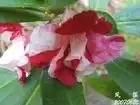 Impatiens
Impatiens1. Seeds (soon): Contains saponins, fats and oils. The oil contains balsaminasterol (C27H80O), parinaric acid (C17H28O2), α-spinasterol and β-sitosterol. In addition, it contains saponins, quercetin diglycoside, quercetin triglycoside, volatile oils, proteins, amino acids and polysaccharides.
2. Flowers: The flowers contain 2-methoxy 1,4-naphthoyl, flavonoids: kaempferol and quercetin.
3. Whole herb (Impatiens balsamina): The aerial part of Impatiens balsamina contains henna, henna methyl ether and quercetin; the whole herb contains hydroxybenzoic acid, sinapinic acid and caffeic acid; the stem contains kaempferol-3-glucoside, cyanidin, cyanidin, etc.; it also contains various anthocyanins, including cyanidin, delphinidin, malvaceae, kaempferol, protein, amino acids and polysaccharides.
Impatiens - Pharmacological Actions
 Impatiens
Impatiens1. Seeds (Impatiens balsamina): Impatiens balsamina decoction, tincture and water extract have obvious excitatory effects on the isolated uterus of rabbits and guinea pigs, and also on the uterus in situ of anesthetized rabbits. The water decoction has different degrees of inhibitory effects on Staphylococcus aureus, hemolytic Streptococcus, Pseudomonas aeruginosa, Shigella flexneri, Shigella sonnei and Salmonella typhi.
2. Flowers: The fresh flower juice of Impatiens balsamina has inhibitory effects on Epidermophyton rubrum, Trichophyton violaceum, Epidermophyton inguinale and Kaufmann's golfball Epidermophyton.
3. Whole herb: The aerial part of Impatiens balsamina has antifungal and hemostatic effects.
Impatiens - Drug Combination
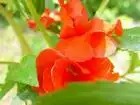 Impatiens
Impatiens1. With Aconite, it can cure chronic diseases and is especially effective in treating stubborn arthritis.
2. With Atractylodes, it can cure rheumatic arthritis. One can dry out dampness and the other can relieve pain. The two herbs can be used together to remove dampness and relieve pain, and the efficacy is greatly increased.
3. With Herba Lycopodii, it can cure liver and kidney deficiency, malnutrition of tendons and bones, poor flexion and extension, numbness of limbs, and contracture of tendons and bones. It has the effect of stretching tendons and penetrating bones.
4. With Millettia reticulata, it can nourish the liver and kidney, promote blood circulation and relieve pain. It is most suitable for those with
long-term arthritis and deficiency. 5. With Dictamni, it can treat eczema and fever.
6. With Morus alba, it can dispel wind and relieve pain. It is the most effective in treating rheumatic arthritis.
7. With Clematis, it can cure wind, cold, and damp arthritis. It is very effective.
Impatiens - Clinical Application
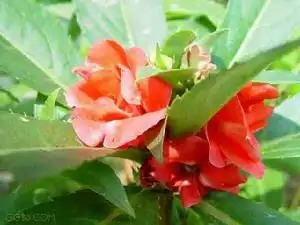 Impatiens
Impatiens1. Indigestion: Soak Impatiens in wine for three nights, dry it and make it into powder. Make wine pills as big as mung beans. Take 8 pills each time, twice a day, take it for 1 week, and you will see the effect.
2. In the early stage of breast cancer, hard as pigeon eggs: Use 6g of Impatiens, decoct it with wine, take it in 2 doses, take it for 7 days, stop for 3 days, and take it again.
3. In the early stage of scrofula: Boil Impatiens paste and apply it to the affected area.
4. All carbuncle:
Mash the whole Impatiens and apply it to the affected area. 5. Ulcers: Use the whole Impatiens to wash the affected area with decoction, wash for 2 weeks, very effective.
6. Onychomycosis: Mash the white Impatiens, add a little alum, apply it on the nails, bandage it with gauze, change it once a day, until it is healed.
7. Vulvar swelling and pain: Use 45g Impatiens and Ze Lan leaves each, decoct it into warm decoction and wash the affected area, twice a day.
8. Goose palm wind: use two large plants of Impatiens with roots, 120g of alum, add 240g of vinegar, mash and apply to the affected area. It is especially effective in the dog days.
9. Eczema: use Impatiens, Plantago, and alum in equal parts, grind and mix well, and apply
cold to the affected area. 10. Swelling of the feet after being exposed to heat: mash fresh Impatiens root, add sugar and apply to the affected area.
11. Shoulder wind: 500g each of Impatiens root, Stinking Chinese Wings, ginger, garlic, and chives, mash the juice, apply the paste over a slow fire, and spread it on the affected area.
12. Leucorrhea: use Impatiens balsamina, remove the leaves, flowers, and seeds, chop them, take 9g of the dry part each time, and decoct with water and wine.
13. Amenorrhea, dry blood tuberculosis: use equal parts of rhubarb and Impatiens balsamina, pound them into fine powder, make pills with water, as big as walnuts, take 4.5-6g each time, drink with wine, take twice a day, take for 1 week, if it doesn't work, stop for 2 days, take it again for 1 week, and then take it for 4 weeks.
14. Edema: use 4-5 Impatiens balsamina roots, stew pork and eat, it will work after 3 times.
15. Traumatic injuries: use 60g of fresh Impatiens balsamina leaves, 30g of Leonurus japonicus and rice wine lees, pound them into a paste, steam and heat, apply to the affected area, once a day, until it heals. 16.
Fracture pain: use 30g of dried Impatiens balsamina, add 250ml of white wine and soak, take 15ml each time, 3 times a day.
17. Unbearable pain in the waist and ribs: Use 30g of dried Impatiens balsamina and Curcuma zedoaria, grind into powder, take 9g twice a day, with sweet wine, and stop taking after recovery. [1]
Impatiens - Commonly used formulas
1. Treat pain caused by wind, regardless of the past or present: 2 liang of peony root, 2 liang of pangolin, 2 liang of fangfeng, 3 liang of angelica, 4 liang of white tribulus, 3 liang of white peony root, 4 liang of scutellaria baicalensis (remove the stems and use the leaves, steam and dry them nine times), 2 liang of sea wind vine, 4 liang of raw earth, 1 liang of guangpi, 1 liang of licorice. Grind the above into powder, use 1 jin of pig fat, and refine honey to make pills the size of sycamore seeds. Take 5 qian each morning and evening, with wine. ("Zhou Yisheng Family Treasure Prescription")
2. Treat rheumatoid arthritis, muscle and bone cramps: 3 qian of peony root, 1 qian each of processed Chuanwu and processed Caowu, and 2 qian of spatholobi. Decoction. ("Selected Chinese Herbal Medicines in Shaanxi, Gansu, Ningqing")
3. Treat the initial stage of swelling and poison: peony root, loulu, fangfeng, and sanguiyu in equal parts. Dip the decoction into cotton and shake it while it is hot. (Yang Cheng's Experience Prescription)
4. Treat scrotal eczema, sores and swelling: Radix Psoraleae, Fructus Cnidium, Dictamni, Folium Artemisiae Argyi. Decoction and wash externally. (Selected Chinese Herbal Medicines in Shaanxi, Gansu, Ningxia and Qinghai)
Impatiens - Prescription
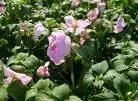 Impatiens
Impatiens1. Treat abdominal pain caused by amenorrhea in women: 3-5 Impatiens flowers, brew tea.
2. Treat edema: 4-5 Impatiens roots each time, stew pork.
3. Treat whooping cough: 10 Impatiens flowers, a little rock sugar, stew.
4. Leucorrhea: 15 grams of Impatiens flowers (or 30 grams of roots), 30 grams of cuttlefish, cook soup, one dose per day. 5.
Treat whooping cough, vomiting blood, hemoptysis: 7-15 fresh Impatiens flowers, decoct in water.
6. Treat waist and rib pain: 9 grams of Impatiens flowers, dry, grind into powder, take on an empty stomach. 7. Treat
fracture pain: 3 grams of dried Impatiens flowers, 9 grams of fresh Impatiens flowers, soak in wine, take orally.
8. Treat goose palm wind, onychomycosis: several fresh Impatiens flowers, rub externally.
9. Treat paronychia: fresh Impatiens flowers or leaves, add a little brown sugar, mash and apply to the affected area.
10. Treat injuries from falls: Take an appropriate amount of Impatiens root, dry it in the sun, grind it into powder, take 9-15 grams each time, and take it with water or wine, one dose a day.
11. Treat injuries from falls: Take the stems and leaves of Impatiens, mash it into juice, and take it with rice wine.
12. Treat scrofula, back rash, and all carbuncle: Mash fresh Impatiens and apply it to the affected area.
13. Treat scrofula, back rash, and all carbuncle: Wash the whole plant of fresh Impatiens with its roots, mash it, add water and boil the juice twice. Filter, combine the filtered juices twice and boil them again, concentrate them into a paste, apply them on paper, and apply them to the affected area, change them once a day.
14. Treat snake bites: Take 150 grams of the whole plant of fresh Impatiens, mash it and squeeze out the juice, and apply the residue to the affected area; or mash Impatiens with wine and take the juice.
Impatiens - Varieties
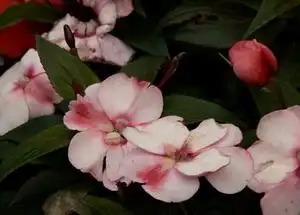 New Guinea Impatiens (non-traditional Impatiens)
New Guinea Impatiens (non-traditional Impatiens)There are two genera, Impatiens and Waterhorn. There are more than 900 species in the whole family, mainly produced in tropical Asia and Africa, and a few are produced in temperate regions. There are 2 genera with more than 200 species, mainly distributed in the southwest. They are mostly grown in humid and mountain valleys or streams. Many Impatiens in this family have beautiful and bright colors and can be cultivated for viewing. Common Impatiens, also known as henna, is native to India, Malaysia and the south, and is cultivated all over the world. The flower colors are varied and there are many horticultural varieties. The glass emerald stems native to East Africa are emerald green and translucent; the flower colors are bright and beautiful, and it is easy to survive by cuttings. It is a common ornamental plant in various provinces and regions in North China.
In fact, the color of Impatiens is not just red, but also from white, pink, rose red to bright red, from light snow blue to purple, purple red, and there are white spots on the red purple background and various color species. According to the "Flower Mirror", there is also a kind of Impatiens with five colors on one stem, but it is rare. It can be seen that Impatiens is also colorful and gorgeous. If Impatiens blooms alone, the color is not gorgeous, but if it is densely planted in one place, the effect is different. If it is divided into several beds in a garden, or drawn into a certain pattern, and each bed is densely planted with one color, when the flowers bloom, the colors alternate, or the colors are combined into a certain colorful pattern, then the red, yellow, purple, white, and green are colorful and gorgeous, and the style is even better.
The Impatiens genus is a large family with a total of 500 species. In addition to Impatiens, there are also Purple Impatiens, Bahe Impatiens, Yellow Impatiens, etc. Purple Impatiens is native to India, the flower color is dark purple, and the flowers bloom at the top of the plant. The Bahe Impatiens balsamina is native to the Himalayas. It is a perennial herb with large flowers. Seven or eight flowers grow in clusters on the flower axis to form a raceme. The corolla of each flower is divided into several colors. The upper flag petal is light rose red, the base of the wing petals on both sides is yellow, the top is rose red, and the lower keel petal is red. One flower has several colors, which makes it more beautiful. The yellow Impatiens balsamina, which is native to Mount Lushan in Jiangxi, is different. The above Impatiens balsamina grows in clusters, but the yellow Impatiens balsamina grows alone between the leaf axils. The slender pedicels are covered with lemon yellow flowers, which are delicate, elegant, fresh, and have a different style.
Among the Impatiens balsamina varieties, there is a rare variety called the Sprinkled Gold variety. The "Collection of Flowers" records such a legend: "Xie Changyu, a Jin Dynasty man, saw Impatiens and ordered his servant to get Ye Gong's golden paste, and sprinkled it with the paste with the tail of a dustpan, and then broke off a branch and inserted it on the side of the mountain. The next year, the golden color of the flower did not go away, and there are still spots of different sizes, like sprinkled gold, and it is called the Reflection Flower". Whether the sprinkled gold variety is as the legend says, as long as you use a duster to dip a little gold paste and sprinkle it on the flower, the flower with sprinkled gold spots will bloom the next year, no one has confirmed it so far. But there are sprinkled gold varieties, and the common white petals with red spots are beautiful and lovely, which is the treasure among Impatiens: sprinkled gold. It should be a variety cultivated artificially for a long time. Yang Chengzhai of the Song Dynasty praised it in a poem: "Look closely at the small clusters of Impatiens, which took a lot of work to dye; the snow-white edge of the robe is purple, and there are four kinds of red in different shades."
Impatiens - Social Application Value
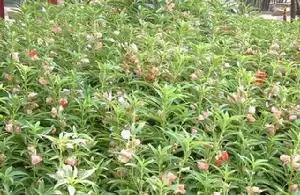 Impatiens
ImpatiensNail painting
It is still unknown who started using Impatiens to dye nails, but judging from the ancient poems, it has been around for a long time. Yuan Dynasty poet Yang Weizhen wrote a poem about Impatiens:
"Pounding fairy flowers with golden plates and dew, they make the delicate jade have leisure. A little worry is pecked by parrots, and the peony buds appear in spring. The delicate powder tears are thrown into red beans, and the flower branches are pinched to make the red clouds. The female companions often ask about it when they meet, and they mistake it for the palace sand several times."
There is also a poem "Drunk in the Shade of Flowers" by Lu Xiuqing, a female poet of the Yuan Dynasty:
"After the Impatiens flowers bloom in the curved railing, they are pounded into a golden basin. The silver armor is temporarily removed, and the spring skin is dyed, and it is deep red overnight. The red dots are lightly covered with green sleeves, and a few beans of love are
on them. I try new makeup in the morning, and draw until the eyebrows are curved, and the red rain and spring heart are teased." These poems describe the way girls dye their nails with Impatiens and the beauty of their jade fingers. Using fairy flowers and dew to dye the delicate jade with red clouds, against the backdrop of green sleeves, the delicate jade fingers seem to be embedded with red beans of love.
Why can red Impatiens mixed with alum dye nails? It turns out that the petals of red Impatiens contain red organic dyes, but they cannot be directly attached to nails. Mordants must be used as a medium to dye them. Alum is a very good mordant. People have known to use alum as a mordant for a long time. The chemical composition of alum is a composite salt of potassium sulfate and aluminum sulfate. After hydrolysis, it produces aluminum hydroxide, which is a kind of paste-like colloid. Only when the nails are attached with a layer of such colloid can they absorb the red dye in the Impatiens petals, making the delicate jade fingers "deep red overnight".
However, there is another kind of real henna. Li Shizhen pointed out in "Compendium of Materia Medica": "Henna has two kinds, yellow and white. It blooms in summer and smells like osmanthus. It can dye nails and is better than Impatiens." The henna mentioned here is a shrub belonging to the Lythraceae family, also known as Henna, which is very fragrant. The leaves contain an orange-yellow dye that can be used for nail painting, etc. However, the cultivation of henna is not widespread, and most people are not aware of it, so they still habitually call it "henna".
Ornamental value
Among flowers, Impatiens is not attractive for its color or fragrance, but mainly for its appearance. The shape of Impatiens is particularly ingenious, and the flower looks like a flying phoenix, with a head, a tail, wings and feet, vivid and lifelike, just like a flying phoenix, which makes people have to admire the magic and wonder of nature.
Food seasoning
When people cook meat or stew fish, adding a few Impatiens seeds will make the meat easier to cook and the bones easier to crisp, giving it a unique flavor.
Impatiens - Cultivation
 Impatiens
ImpatiensGrowth habit
Impatiens likes sunlight, is afraid of moisture, is heat-tolerant but not cold-tolerant, and is suitable for growing in loose, fertile, slightly acidic soil, but is also tolerant to barrenness. Impatiens has strong adaptability, is easy to survive after transplantation, and grows rapidly.
Cultivation techniques
Propagate by seeds. Sow in March-September, with April being the most suitable. This way, it will bloom in early to mid-June, and the flowering period can last for more than two months. Before sowing, the seedbed should be watered thoroughly to keep it moist. The seeds of the phoenix are relatively small, so water should not be poured immediately after sowing to avoid washing the seeds away. Cover with a thin layer of soil about 3-4 mm, pay attention to shade, and the seedlings will emerge in about 10 days. When the seedlings grow 2-3 leaves, they should be transplanted, and then gradually planted or potted for cultivation.
Pest control
Impatiens powdery mildew
symptoms This disease mainly occurs on leaves and tender shoots. It usually starts in June, and the leaves are covered with white powder after July. Subsequently, small yellow dots form in the white powder layer, and the color gradually darkens and finally turns dark brown. Transmission route The pathogen overwinters in the remains and seeds of the diseased plants. The following year, when the environment is suitable, the pathogen spreads by wind and rain. August to September is the peak period of the disease.
Prevention and control methods:
1. Planting is not too dense, proper ventilation, and strengthening fertilizer and water management to enhance the disease resistance of the plants. Remove diseased leaves and diseased plants and destroy them in a centralized manner to reduce the source of infection.
2. During the disease period, use 15% fenadimefon wettable powder 1000~1200 times liquid, or 70% methyl thiophanate wettable powder 1000 times liquid for prevention and control. Avoid spraying at high temperatures above 32°C to avoid drug damage.
Impatiens brown spot disease
Impatiens brown spot disease, also known as Fengxianhua leaf spot disease, occurs in all parts of the north and south.
Symptoms: The disease mainly occurs on leaves. The leaf spots are initially light yellow-brown dots, which then expand into round or oval shapes. Later, the center becomes light brown, the edges are brown, and there are inconspicuous rings. On seriously diseased leaves, the spots are continuous, causing the leaves to turn yellow and eventually die. Transmission route: The pathogen overwinters on the diseased remains of Impatiens and soil plant fragments. When the environmental conditions are suitable the following year, the pathogen spreads by wind and rain. It is easy to get sick in hot and rainy seasons.
Prevention and control methods: Impatiens likes fertile sandy loam and is not tolerant to waterlogging. Therefore, it is advisable to plant in sandy loam to facilitate drainage; potted Impatiens should be turned over in time after rain. In late autumn, diseased leaves and plants should be destroyed in a centralized manner to reduce the source of infection next year. In the early stage of the disease, 25% carbendazim wettable powder 300-600 times diluted, or 50% methyl thiophanate 100 times diluted, or 75% thiophanate-methyl 1000 times diluted are used for prevention and control. Symptoms of
Impatiens damping-off
The pathogen mainly infects the rhizomes, causing the diseased parts to turn black or constrict. When it is humid, white mold grows on them. After the plant is infected, the leaves will wilt and dry up within a few days, and then the whole plant will die. Transmission route:
1. It mainly overwinters in the soil or diseased residues in the form of hyphae or sclerotia. The hyphae in the soil live a saprophytic life and do not hibernate.
2. In the field, it is mainly transmitted by contact, that is, when the roots, stems, and leaves of the plant come into contact with the diseased soil, they will be infected by the hyphae in the soil. Under the condition of water film, the healthy leaves in contact with the diseased parts will be infected. In addition, seeds, farm tools, and bacterial compost can spread the disease.
Prevention and control methods: After removing the diseased plants at the early stage of the disease, spray 600 times of 75% chlorothalonil wettable powder, or 500 times of 60% duofu wettable powder, 1200 times of 20% methyl tolclofos emulsifiable concentrate.
Impatiens - Culture
 Impatiens
ImpatiensRelated poems
"Look closely at the cluster of small golden phoenix flowers, they are dyed with great effort by the flower department. The snow-white edge of the robe is purple, and the red is as deep and shallow as the sun."
"Whose flute is this? The Milky Way flows westward and the moon is half slanting. The common people dye their slender nails red, and pound impatiens flowers in a golden basin at night."
"Yang Fei was born with red nails on her hands and feet, and the palace imitated her."
"When the fragrant red and tender green flowers are blooming, the cold butterflies and hungry bees are unaware. Where is the best place to watch at this time, when the morning sun is just rising over the green wutong branches."
"Listen to the golden basin pounding impatiens at night, and the slender nails are dyed red. The needle is skillfully tested for the mandarin duck water, and the autumn wind blows in the embroidered pavilion again."
Stories and Legends
It is said that a long time ago, there was a girl named Fengxian in Longxi, Fujian. She was graceful, gentle and kind, and fell in love with a young man named Jintong. One day, the son of the county magistrate passed by and saw Fengxian was so beautiful and cute that he suddenly had evil intentions and came to tease her. After being scolded by Fengxian, he left in disgrace. Fengxian knew that she had caused a big disaster and the county magistrate's son would definitely ask for trouble. So she decided to go to another place with Jintong. Fengxian only had her father, and Jintong had his mother. The two old and two young set off overnight to escape from their hometown. On the way, Jintong's mother fell ill and had amenorrhea and abdominal pain. There was no place to seek medical treatment in the wild mountains and wilderness, so the four had to stop and rest.
When the county magistrate heard that his son was scolded by the village girl, he ordered his men to capture Fengxian. Seeing that he was about to catch up, Fengxian and Jintong bid farewell to their parents and jumped into the abyss to show their cleanliness. The two old men suppressed their grief and buried Fengxian and Jintong together. At night, the two old men slept by the grave. Fengxian and Jintong dreamed to their parents at night, telling them that the flowers blooming in the mountain stream could cure their mother's illness. When they woke up the next day, they saw the mountain stream was full of red and white flowers, the red ones looked like morning glow, and the white ones looked like pure silver. The old man picked the flowers and boiled them into a decoction, and after taking it, the medicine really cured his illness. Later, people named this flower Impatiens to commemorate it.
According to ancient legends, the phoenix is the king of birds, the male bird is called phoenix, and the female bird is called phoenix. Because Impatiens has this beautiful name, people think of the phoenix when they see it. The Ming Dynasty poet Qu You wrote in his poem "Phoenix Fairy": "No phoenix can be seen flying on the high platform, but the immortal soul can comfort the thoughts." The meaning is that although people have never seen a phoenix flying in the high place, they can see the Impatiens transformed by the immortal soul of the phoenix, which can also comfort people's longing for the phoenix. The Tang Dynasty poet Wu Renbi wrote in his poem "Impatiens": "When the fragrant red and tender green flowers are in full bloom, the cold butterflies and hungry bees are unaware. Where is the best place to see them at this time? The morning sun is just rising on the green branches of the phoenix tree." It is said that the phoenix can only live on the phoenix tree. The green branches in the poem refer to the branches of the phoenix tree. The poet has regarded the impatiens as the incarnation of the phoenix, which shows that the impatiens has a certain status in the history of flower culture. The nails dyed red with impatiens also make the poets imagine. In the Yuan Dynasty, Yang Weizhen wrote in his poem "Impatiens" that "peach petals fall randomly when playing the zither", describing the woman with red nails playing the zither, her fingers flipping up and down, like peach petals falling.
Flower Language
August 10 Birthday Flower: Garden Balsam
Flower Language: Tom Boy
The seeds of the Impatiens flower dance in the wind when they mature, and they look like they are full of vitality. Therefore, it is called "Jumping Little Betty" and "Cute Tom Boy", so its flower language is Tom Boy.
Christianity
Anyone born under the blessing of this flower has a very lively personality, like a lively elf. They are carefree emotionally, and may not even have been in love, so they have no way of experiencing the ups and downs of love.
In ancient Christianity, there was a habit of linking saints with specific flowers, because when the church commemorated saints, it usually decorated the altar with blooming flowers. After the Middle Ages, in Catholic monasteries, all kinds of flowers were planted like a gardening center. Over time, the church combined the saints of 366 days with different flowers to form the so-called flower calendar. Since most of the monasteries were located in southern Europe at that time, and southern Europe had a Mediterranean climate, it was very suitable for planting flowers and plants. Various flowers bloomed, and each flower had rich meanings.